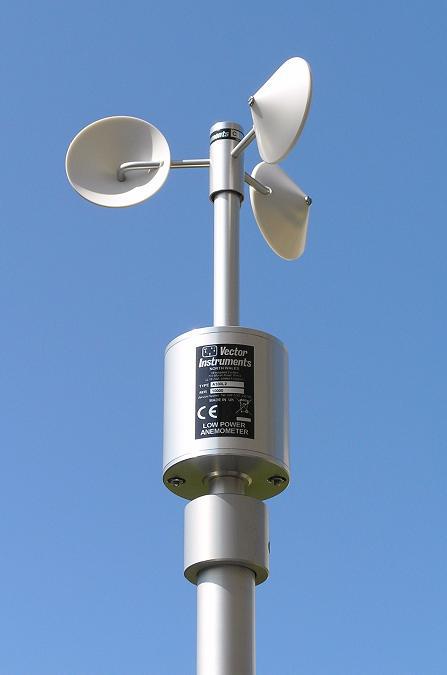Anemometer Innovations: The Latest Modern Technology for Wind Speed Dimension
Anemometer Innovations: The Latest Modern Technology for Wind Speed Dimension
Blog Article
All You Required to Understand About Anemometers: Just How They Function, Why They Matter, and Where to Utilize Them
Anemometers, however typically forgotten in the world of scientific tools, play a vital duty in numerous areas, offering important insights into wind speed and airflow patterns. As we dive right into the complexities of anemometer modern technology, we will certainly discover the inner operations of these gadgets, their relevance, and the vital considerations when selecting the ideal anemometer for certain applications.

Anemometer Basics
A vital instrument utilized to determine wind rate and instructions, the anemometer plays a critical duty in meteorology and numerous industries. An anemometer normally includes three or four cups that rotate in the wind, a vane that directs into the wind, and sensing units to track the movements or turnings. By calculating the rotations or motions over a particular time period, the anemometer can establish wind speed. The vane helps identify wind instructions by directing right into the wind, providing useful information for weather condition forecasting, aviation, maritime procedures, environmental monitoring, and wind power applications.
There are various kinds of anemometers readily available, including cup anemometers, vane anemometers, hot-wire anemometers, and sonic anemometers, each with its unique functions and applications. Cup anemometers are commonly used for basic wind speed measurements, while vane anemometers are liked for directional measurements. Hot-wire anemometers appropriate for reduced airspeeds, and sonic anemometers are excellent for high-precision measurements in study and commercial settings. Comprehending the basics of anemometers is vital for accurate wind data collection and evaluation across different markets.
Principles of Anemometer Procedure
Structure on the fundamental understanding of anemometer essentials, the concepts of anemometer procedure elucidate the technicians behind wind rate and direction measurements. Anemometers operate the concept of airflow impacting a sensor, triggering it to revolve. Mug anemometers, as an example, have 3 or even more mugs that record the wind, causing them to spin much faster as the wind speed rises. The rotation rate is then transformed into a wind speed dimension. Vane anemometers, on the other hand, use a tail or a probe that straightens itself with the wind instructions, providing a measurement of wind direction based on the alignment of the sensor. Hot-wire anemometers rely upon a heated cable that cools down as wind passes over it, with the price of cooling down establishing the wind speed. Ultrasonic anemometers action wind speed and instructions by analyzing the time it takes for ultrasonic signals to travel between transducers. Comprehending these principles is critical for trustworthy and exact wind measurements in various applications.
Significance of Anemometers
Anemometers play a crucial duty in measuring wind rate and direction, supplying necessary Discover More Here information for climate projecting, environment researches, ecological tracking, and aeronautics operations. Meteorologists rely on anemometers to collect accurate wind information, helping them recognize weather condition patterns, predict storms, and official source problem timely warnings to the public. Wind farm operators utilize anemometers to evaluate wind conditions and optimize electricity production from wind generators.
Applications Throughout Different Industries
Applications of anemometers extend across varied markets, showcasing their versatility and energy past meteorology. In the renewable resource sector, anemometers play an essential duty in analyzing wind conditions for wind ranch positionings, making sure ideal energy manufacturing. Industries like building and mining make use of anemometers to keep track of wind speeds, essential for safety procedures, specifically when working at heights or in open-pit mines where strong winds can posture risks. Anemometers are also essential in the aeronautics market, assisting pilots in comprehending airspeed and wind instructions for safe take-offs and landings. The maritime industry gain from anemometers for ship navigating, helping sailors anticipate weather condition adjustments and readjust paths appropriately. In agriculture, anemometers assist farmers in handling crop splashing by giving real-time data on wind speed to prevent drift. Anemometers locate applications in A/c systems to enhance air movement and enhance energy performance in structures. The varied usage instances of anemometers highlight their value throughout various industries, highlighting their crucial function in enhancing operational security and effectiveness (anemometer).

Picking the Right Anemometer for Your Needs
Choosing the appropriate anemometer tailored to your details needs is necessary for obtaining accurate Website wind rate and direction measurements. When selecting an anemometer, think about variables such as the designated application, called for dimension array, ecological conditions, and preferred attributes. For basic objectives, a cup anemometer is appropriate for measuring wind rate, while a vane anemometer supplies wind instructions data. Hot-wire anemometers are ideal for low airspeed dimensions, and ultrasonic anemometers supply high accuracy and sturdiness.

Conclusion
In conclusion, anemometers play a crucial function in gauging wind speed and direction throughout different markets. It is crucial to consider the relevance of anemometers in order to make enlightened decisions when picking the most suitable tool for measuring wind problems.
There are different types of anemometers offered, including cup anemometers, vane anemometers, hot-wire anemometers, and sonic anemometers, each with its distinct attributes and applications. Mug anemometers are typically made use of for standard wind speed dimensions, while vane anemometers are favored for directional dimensions. Hot-wire anemometers are ideal for reduced airspeeds, and sonic anemometers are perfect for high-precision dimensions in study and commercial settings.Building on the fundamental understanding of anemometer basics, the concepts of anemometer operation illuminate the technicians behind wind rate and instructions measurements. For basic purposes, a mug anemometer is appropriate for gauging wind rate, while a vane anemometer supplies wind direction information.
Report this page